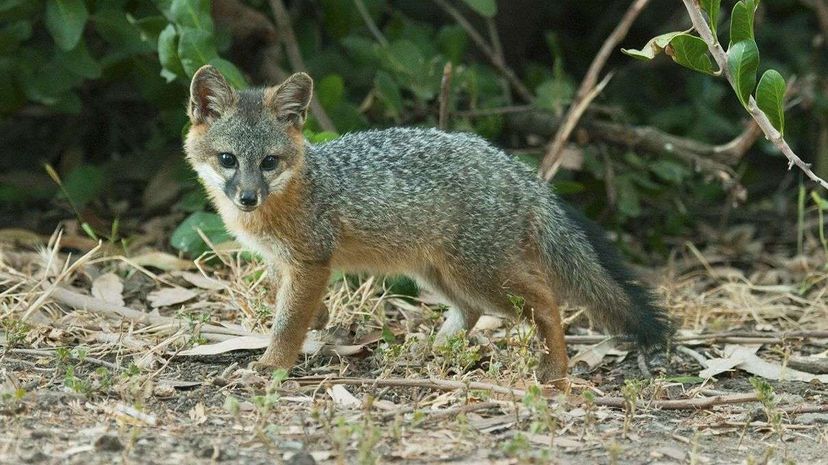
We've grown accustomed to a certain type of sad news cycle: One year you hear a species is endangered, and soon after, there's another announcement that the endangered animal's gone extinct. That makes it all the more important to celebrate the success stories in wildlife preservation, and the newest one involves one of the rarest mammals in the United States: a tiny fox no larger than a housecat that weighs only 4 pounds (1.8 kilograms) when fully grown.
Four of the six Channel Islands off the coast of Southern California have been home to the island fox (Urocyon littoralis). Starting In the late 1990s, the island fox population on Santa Cruz plummeted in the span of a decade by 95 percent, from 3,600 to fewer than 100 animals on all the islands combined. Subsequent to that near-total collapse, all four subspecies of island fox living on the Channel Islands were placed on the endangered species list in 2004. But thanks to recent efforts by government and private organizations, more than 2,000 foxes now live on Santa Cruz alone, up from 55 in 2004.
Advertisement
"It's remarkable to think that in 2004, these foxes were given a 50 percent chance of going extinct in the next decade. Yet here we are today, declaring three of the four subspecies recovered and the fourth on its way," said National Park Service director Dan Ashe in a press release.
A combination of factors contributed to the near-extinction. In the mid-19th century, ranchers brought pigs to the islands. Over the past 160 years the pig population ran wild, damaging the ecosystem and disrupting the island's food chain — the pigs trampled the habitats of the animals the foxes would eat. Additionally, the pig population attracted golden eagles from the mainland, and those predatory birds would hunt baby foxes. The golden eagles didn't live on the islands originally, but filled a niche after the bald eagle population was destroyed by the pesticide DDT. The bald eagles that lived on the islands primarily ate marine animals and posed no threat to the foxes, but the golden eagle diet includes rodents and small mammals.
The feral pig population peaked at more than 5,000 animals before conservationists intervened. Ecologists had to restructure the entire ecosystem to save the foxes. The National Park Service, the Nature Conservancy, Santa Catalina Island Conservancy and Institute for Wildlife Studies joined forces to bring the foxes back from the brink, establishing a captive breeding program. A team of hunters were brought in to capture or kill the pigs, and scientists captured golden eagles on the islands and returned them to the mainland.
"The fact that they're isolated on these islands gives them a unique personality," says Christina Boser, a scientist with the Nature Conservancy, in the above Wired video. "They're very curious."
The foxes of San Miguel, Santa Rosa and Santa Cruz, the most biodiverse island in California, have been removed from the endangered species list and listed as fully recovered, while the Santa Catalina subspecies shifted from endangered to threatened and may soon join its cousins.
"It's an exceptional success to be able to take a species off the endangered species list," says Boser, "particularly the fox. It's the fastest mammal recovery in the history of the Endangered Species Act."
How the foxes reached the islands in the first place isn't clear, though scientists point to evidence that some may have swam or floated to the islands thousands of years ago. Additionally, indigenous tribespeople transported the foxes from at least some of the islands to others as traveling companions.
But just because the island fox population is on the rebound these days, that doesn't mean life's trouble free. The population is still fragile, and researchers caution that the biggest threat to the little canids still lurks only a few miles away — mainland diseases not yet on the island could spell trouble for the fox population.

Advertisement